[ Spring 2008 ]
Michael Von Clemm traveling fellows experience public health in the real world
There’s a world of difference between studying public health and working in the field. If you’re going to stop sexual genocide, stem the spread of HIV/AIDS in Africa, or design malaria treatment programs, you have to go where the people are and see the world through their eyes. That’s what the family of the late Michael von Clemm, an anthropologist whose accomplished career included field work on the slopes of Mt. Kilamanjaro, hoped to foster when, in 2005, family members created a fellowship in his name at the Harvard School of Public Health.
This past summer, in year three of a five-year commitment, the family’s foundation provided financial support for 29 HSPH students to explore their academic interests through travel, primarily to developing countries. Seven are profiled below.
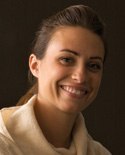 Women and girls come to Panzi Hospital in the Democratic Republic of Congo at a rate of around 10 a day. They are survivors of a 12-year-old civil war in which government soldiers and rival militiamen are using rape as a deadly weapon. In some regions, as many as 70 percent of the girls and women ages 10 to 30 have experienced sadistic assaults, often with bayonets or chunks of wood, their reproductive and digestive systems savaged. Last summer, HSPH master’s student Jocelyn Kelly went to listen to their stories.
Women and girls come to Panzi Hospital in the Democratic Republic of Congo at a rate of around 10 a day. They are survivors of a 12-year-old civil war in which government soldiers and rival militiamen are using rape as a deadly weapon. In some regions, as many as 70 percent of the girls and women ages 10 to 30 have experienced sadistic assaults, often with bayonets or chunks of wood, their reproductive and digestive systems savaged. Last summer, HSPH master’s student Jocelyn Kelly went to listen to their stories.
Kelly, who is now in the second year of a concentration in Population and International Health, worked at Panzi Hospital as a research intern for the International Medical Corps. She coordinated a survey team, led focus groups, and surveyed women at the hospital, capturing testimonies that she hopes will help area relief organizations better meet these women’s needs. Having worked as an emergency manager in post-Katrina New Orleans and as a volunteer with a physician in rural Mexico, Kelly felt prepared for the physical trauma. But big surprises were in store.
Overwhelmingly, they wanted education for themselves and their children. “The women were as anxious to heal their minds as their bodies,” Kelly says.
The women asked for job training so they could support themselves financially and rise above the stigma rape carries. “You would expect these women to be broken, but they’re not,” Kelly says. “They’re some of the strongest and most articulate I’ve ever met.”
Back at HSPH, Kelly discovered and joined a team that conducts research at Panzi Hospital through the Harvard Humanitarian Initiative (HHI). HHI funded her return trip in January to gather data on root causes of the violence, which she plans to incorporate into her thesis. Her early research has already garnered interest from the United Nations Office for the Coordination of Humanitarian Affairs, which has partnered with HHI. After graduation, Kelly hopes to continue working at Panzi.
“I didn’t go into this internship expecting to find a career,” she says. “However, like everyone else who’s been touched by these survivors, I can’t turn away from them.”
2 million newborn deaths
 Rachel Rosenheck worked as an EMT and a clinic and emergency room volunteer as a University of California-Berkeley undergraduate. She plans to go to medical school after completing her degree in Population and International Health next year. Working as a UNICEF intern in India, Rosenheck saw the country’s rural health care system close up, and it was an eye-opening experience.
Rachel Rosenheck worked as an EMT and a clinic and emergency room volunteer as a University of California-Berkeley undergraduate. She plans to go to medical school after completing her degree in Population and International Health next year. Working as a UNICEF intern in India, Rosenheck saw the country’s rural health care system close up, and it was an eye-opening experience.
Her task was to evaluate a program for reducing India’s more than two million annual newborn deaths in the country. The plan didn’t match the realities on the ground, she says. “Medications and lab space had been built into the program, but they weren’t available in many cases.”
10,000 people, no doctors
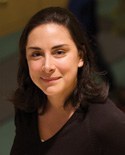 Having worked with street kids in Quito, Ecuador, and as a translator at a free clinic in the Dominican Republic, Debra Vaughn Hester had seen extreme poverty before. But an internship with the U.S.-based nonprofit organization FORGE at the Meheba Refugee Settlement in Zambia shook her deeply. She had come to study the availability of health care there as well as set up opportunities for HIV/AIDS education, introducing, for example, a prevention curriculum through a youth soccer league.
Having worked with street kids in Quito, Ecuador, and as a translator at a free clinic in the Dominican Republic, Debra Vaughn Hester had seen extreme poverty before. But an internship with the U.S.-based nonprofit organization FORGE at the Meheba Refugee Settlement in Zambia shook her deeply. She had come to study the availability of health care there as well as set up opportunities for HIV/AIDS education, introducing, for example, a prevention curriculum through a youth soccer league.
“There were 10,000 people and no doctors,” says the second-year Population and International Health master’s student. “It was hard enough for people to get a primary care exam, let alone HIV/AIDS treatment. But it added to my motivation because I could see the real impact our work would have.”
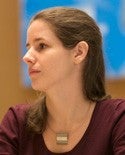 Erin Hetherington spent a year as a public health educator in Mexico and did an internship at the Uganda Human Rights Commission. Last summer, she learned the inner workings of the World Health Organization in Geneva, Switzerland and racked up career contacts.
Erin Hetherington spent a year as a public health educator in Mexico and did an internship at the Uganda Human Rights Commission. Last summer, she learned the inner workings of the World Health Organization in Geneva, Switzerland and racked up career contacts.
There, the second-year master’s student in Population and International Health worked on a tool kit to help international policymakers strengthen reproductive rights laws. After exploring the human rights abuses girls face around the world, she decided to do her thesis on HIV risk factors in adolescent girls in Tanzania. According to UNAIDS, 55 percent of the country’s HIV infections in 2005 occurred in girls and women ages 15-49.
During HSPH’s January break, Hetherington organized a visit to Tanzania for three weeks. She met with health care and relief workers, whose insights helped her understand a story that was emerging from the data she’d gathered-that more schooling heightened a girl’s risk of contracting HIV.
Many girls have to go to boarding school, or travel four or more hours to school round trip, she discovered. “This puts them in vulnerable situations. Men will offer them a lift and then expect sex,” she says, noting that she would never have discovered this from data alone.
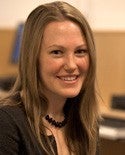 Stephanie Psaki held focus groups with college students in Durban, South Africa, on sexual partnering behaviors and HIV risk as part of her internship with the Harvard Center for Population and Development Studies. Before enrolling for a master’s degree at HSPH in Population and International Health, Psaki had traveled to seven other African countries as USAID-funded AIDS prevention program officer for the Center for Gender Equity at the Academy for Educational Development. But she got a much different perspective from this experience, she says.
Stephanie Psaki held focus groups with college students in Durban, South Africa, on sexual partnering behaviors and HIV risk as part of her internship with the Harvard Center for Population and Development Studies. Before enrolling for a master’s degree at HSPH in Population and International Health, Psaki had traveled to seven other African countries as USAID-funded AIDS prevention program officer for the Center for Gender Equity at the Academy for Educational Development. But she got a much different perspective from this experience, she says.
Previously, her interactions were limited to representatives of ministries of health or USAID. This time, she says, “I had the chance to hear the voices of people directly affected by HIV/AIDS and draw my own conclusions.” She is translating her research into a thesis on how women’s empowerment affects their risk of HIV.
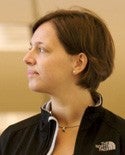 Mieke Van Hemelrijck, a second-year Population and International Health master’s student from Belgium, learned that a patient’s perception of their care can make all the difference in whether they stick with it. As a data analyst for the International Infectious Disease Program of the U.S. Centers for Disease Control and Prevention and the Kenyan Medical Research Institute, Van Hemelrijck analyzed a decade’s worth of data on pediatric clinic visits, searching for trends in malaria symptoms, diagnosis, and treatment. Meanwhile, she had the opportunity to visit several health facilities and talk to clinicians about how the data was collected.
Mieke Van Hemelrijck, a second-year Population and International Health master’s student from Belgium, learned that a patient’s perception of their care can make all the difference in whether they stick with it. As a data analyst for the International Infectious Disease Program of the U.S. Centers for Disease Control and Prevention and the Kenyan Medical Research Institute, Van Hemelrijck analyzed a decade’s worth of data on pediatric clinic visits, searching for trends in malaria symptoms, diagnosis, and treatment. Meanwhile, she had the opportunity to visit several health facilities and talk to clinicians about how the data was collected.
Recent interventions with bed nets and antimalarial drugs had been effective in reducing cases of the disease. But the data didn’t entirely add up. By talking with field workers, Van Hemelrijck found out why. The issue of who ran a health care facility mattered to patients, field workers told her. If a patient saw a doctor during their first visit but a lower-ranking health care worker subsequently, they often did not come back.
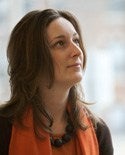 Claire Chase spent the summer as field coordinator with the Barcelona Centre for International Health Research and the Manhiça Health Research Center in Mozambique. It was her role to evaluate the cost-effectiveness of combining antimalarial drugs and insecticide-treated bed nets for preventing malaria in pregnant women. The experience solidified her passion for health economics research and sparked an interest in malaria.
Claire Chase spent the summer as field coordinator with the Barcelona Centre for International Health Research and the Manhiça Health Research Center in Mozambique. It was her role to evaluate the cost-effectiveness of combining antimalarial drugs and insecticide-treated bed nets for preventing malaria in pregnant women. The experience solidified her passion for health economics research and sparked an interest in malaria.
For her thesis, Chase will examine the influence of community, demographic, and socioeconomic factors on household willingness to pay for the bed nets. After finishing her master’s degree in Population and International Health, she hopes to earn a PhD and then apply her skills in developing countries, where health economists are scarce.
Amy Roeder is the development communications coordinator for the Office for Resource Development at HSPH.
Photos: Kent Dayton/HSPH